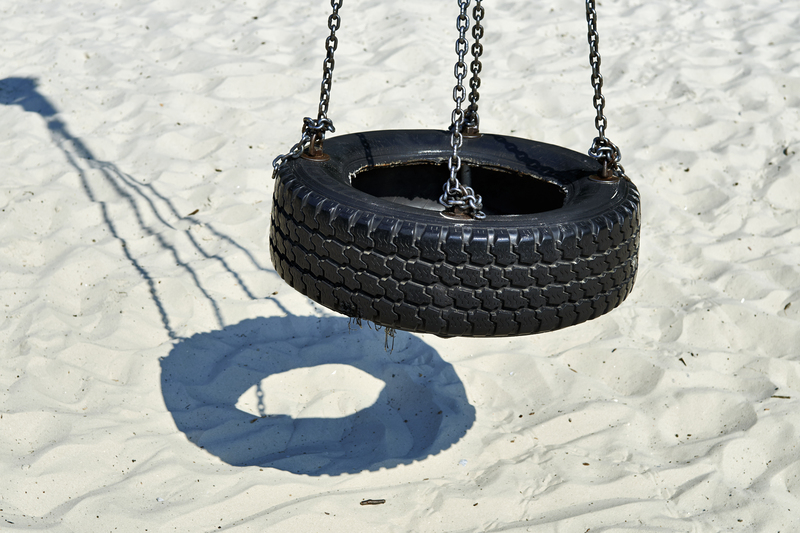What to Know About Safely Getting Rid of PPE Waste
The global demand for Personal Protective Equipment (PPE) has surged in recent years due to factors like the COVID-19 pandemic, industrial requirements, and healthcare necessities. While PPE plays a critical role in protecting individuals from harmful substances, its improper disposal can have serious ramifications for public health and the environment. Understanding how to safely get rid of PPE waste is crucial for maintaining a clean, safe, and sustainable world.
Why Proper PPE Waste Disposal Matters
PPE waste--which includes masks, gloves, face shields, gowns, and other protective items--can contribute to environmental pollution and pose health risks if not disposed of responsibly. Improperly discarded PPE can:
- Clog sewage and drainage systems, leading to urban flooding and waterway blockages
- Harm wildlife by entanglement or ingestion of PPE items
- Serve as a vector for infectious diseases, especially if contaminated with pathogens
- Add to landfill burden, as many PPE items are not biodegradable
- Release microplastics, causing long-term ecological issues
Learning the right ways to handle and dispose of PPE waste not only keeps people safe, but also contributes to global efforts toward sustainability and environmental conservation.

Types of PPE Waste
When considering PPE waste management, it's important to recognize the various types of PPE in use:
- Masks (surgical, N95, cloth masks)
- Disposable gloves (latex, nitrile, vinyl)
- Gowns and coveralls
- Face shields and goggles
- Shoe covers and head caps
Each category of PPE waste may require slightly different disposal methods, depending on their material composition and potential for contamination.
Common Challenges in PPE Waste Disposal
- High Volume: Mass use, especially during health crises, dramatically increases daily waste.
- Potential Contamination: Used PPE may harbor pathogens, including bacteria and viruses.
- Material Complexity: Many PPE items are made from mixed materials (plastics, textile blends) that complicate recycling and disposal.
- Lack of Public Awareness: Many individuals are unsure how to correctly discard PPE, increasing the risk of improper waste management.
Legal and Regulatory Considerations
Governments and regulatory agencies often have specific guidelines for PPE disposal, particularly for infectious or hazardous waste. Certain organizations, like the World Health Organization (WHO) or the Centers for Disease Control and Prevention (CDC), offer recommendations for safe PPE waste management.
Best Practices for Safely Getting Rid of PPE Waste
Implementing careful procedures is key for both individuals and organizations. Here are the primary best practices to ensure safe PPE waste disposal:
1. Sort and Identify PPE Waste
Not all PPE waste is the same! If PPE has been used in a healthcare or high-risk infectious environment, consider it potentially infectious. For general public use, like masks and gloves used during errands, treat PPE waste as household waste, but handle it with care.
2. Contain Used PPE Properly
- Dispose of used PPE in a dedicated, lined trash bin--do not toss masks or gloves on the ground or in open spaces.
- If possible, use containers with lids to prevent accidental spillage or contact.
- Seal waste bags securely before discarding.
3. Avoid Touching Used PPE Directly
- Always remove and discard PPE using appropriate techniques to minimize contact with potentially contaminated surfaces.
- Wash hands thoroughly with soap and water, or use a hand sanitizer after handling used PPE.
- Do not attempt to clean and reuse disposable PPE (unless specifically designed for multiple uses).
4. Label and Segregate Infectious PPE Waste
- If you're in a medical or clinical environment, use color-coded bags (usually yellow or red) for contaminated PPE waste.
- Label bags as "infectious" if possible, especially relevant for healthcare, laboratories, and high-risk locations.
5. Follow Local PPE Waste Disposal Regulations
- Check your municipality or regional guidelines for PPE disposal--some areas may require PPE to be taken to specific facilities or incinerators.
- Do not attempt to recycle used PPE in standard recycling bins unless explicitly stated by local authorities.
6. Support PPE Waste Recycling Initiatives
Some innovative programs and companies now offer PPE recycling solutions. For example, specialized companies can process used masks, gloves, and gowns to convert them into usable energy or repurpose the materials.
- Research nearby facilities or drop-off centers that accept PPE waste for recycling.
- Encourage workplaces, schools, or community organizations to participate in recycling programs.
7. Educate and Encourage Responsible PPE Waste Disposal
- Raise awareness within your household, workplace, or community about proper PPE waste disposal methods.
- Display clear signage and instructions near PPE disposal bins.
- Share authoritative resources and local guidelines with others.
PPE Waste Disposal Guidelines: At Home vs. Workplace
Disposing of PPE Waste at Home
- Do not flush PPE items down the toilet. This causes blockages and pollutes water systems.
- Bag used PPE separately, tie securely, and place with other non-recyclable household waste.
- Remember to thoroughly wash hands after every disposal.
- Avoid mixing PPE with recyclable or compostable items.
Disposing of PPE Waste in Workplaces and Healthcare Settings
- Use designated PPE waste bins, clearly labeled and lined with appropriate bags.
- Follow the organization's protocol for hazardous, clinical, and contaminated wastes.
- Arrange for regular collection and disposal in accordance with health authority guidelines.
- Train staff on how to handle, segregate, and store PPE waste safely.
Environmental Impacts of PPE Improper Disposal
Discarded PPE is rapidly becoming a global environmental concern. The surge in single-use PPE has severely strained waste management systems. Some unseen yet significant impacts include:
- Microplastic Pollution: Most disposable masks, gloves, and protective gear contain plastic that takes centuries to degrade.
- Wildlife Endangerment: Animals can mistake PPE for food or become entangled, often leading to fatal outcomes.
- Marine Ecosystem Threats: PPE washed into rivers and oceans harms fish, birds, and other aquatic life.
- Greenhouse Gas Emissions: Incineration, while preferred over landfill, leads to emissions unless conducted in specialized facilities.
Looking for Alternatives: Eco-Friendly PPE Options
One solution to the mounting PPE problem is the use of biodegradable or reusable PPE wherever suitable. This includes cloth masks for everyday use or PPE made from natural fibers for low-risk settings. However, ensure that such alternatives still meet safety standards for the intended use.
How To Recycle PPE Waste Responsibly
Since most PPE items are single-use and made from multiple material types, they typically aren't suitable for regular recycling streams. However, these specialized approaches may help:
- Participate in programs offered by companies such as TerraCycle, which collect and recycle PPE waste through advanced processes.
- Workplaces can collaborate with waste management firms that provide PPE-specific disposal and recycling services.
- Stay informed about new technologies and government-funded recycling pilots in your area.
Innovation in PPE Waste Recycling
As technology advances, more manufacturers are exploring closed-loop recycling for PPE, meaning the waste is processed and reused for similar or new products. This process may involve thermal treatment, chemical recycling, or conversion to alternative fuel. The wider adoption of such innovations depends largely on consumer demand and regulatory support.
Myths and Facts About PPE Waste Disposal
-
Myth: All PPE can be recycled in curbside bins.
Fact: Most single-use PPE is made from mixed plastic and is not suitable for standard recycling systems. -
Myth: PPE is harmless once it's in the landfill.
Fact: PPE materials break down very slowly, often releasing microplastics and chemical residues. -
Myth: Burning PPE at home is an effective disposal method.
Fact: Incinerating PPE in uncontrolled environments can release toxic fumes and is illegal in many regions.

Future Trends in PPE Waste Management
- Improved Material Design: More manufacturers are investing in eco-friendly, biodegradable PPE.
- Centralized Collection Systems: Cities and health systems are introducing more drop-off points for PPE waste.
- Public Education: Efforts are increasing to teach communities about responsible disposal.
- Advanced Recycling: The development of safe, cost-effective PPE recycling techniques.
Conclusion: Your Role in Safe PPE Waste Disposal
With the ongoing importance of PPE in safeguarding public health, knowing how to safely get rid of PPE waste is everyone's responsibility. By following proper disposal protocols, supporting recycling initiatives, and spreading awareness, you can:
- Reduce the risk of disease transmission
- Protect wildlife and natural habitats
- Decrease the burden on already strained waste management systems
- Support a cleaner and more sustainable environment
Remember: Each mask, glove, or gown you dispose of responsibly is a step toward a healthier planet. Make informed choices about your PPE use and waste disposal--share this knowledge and help your community do the same!
